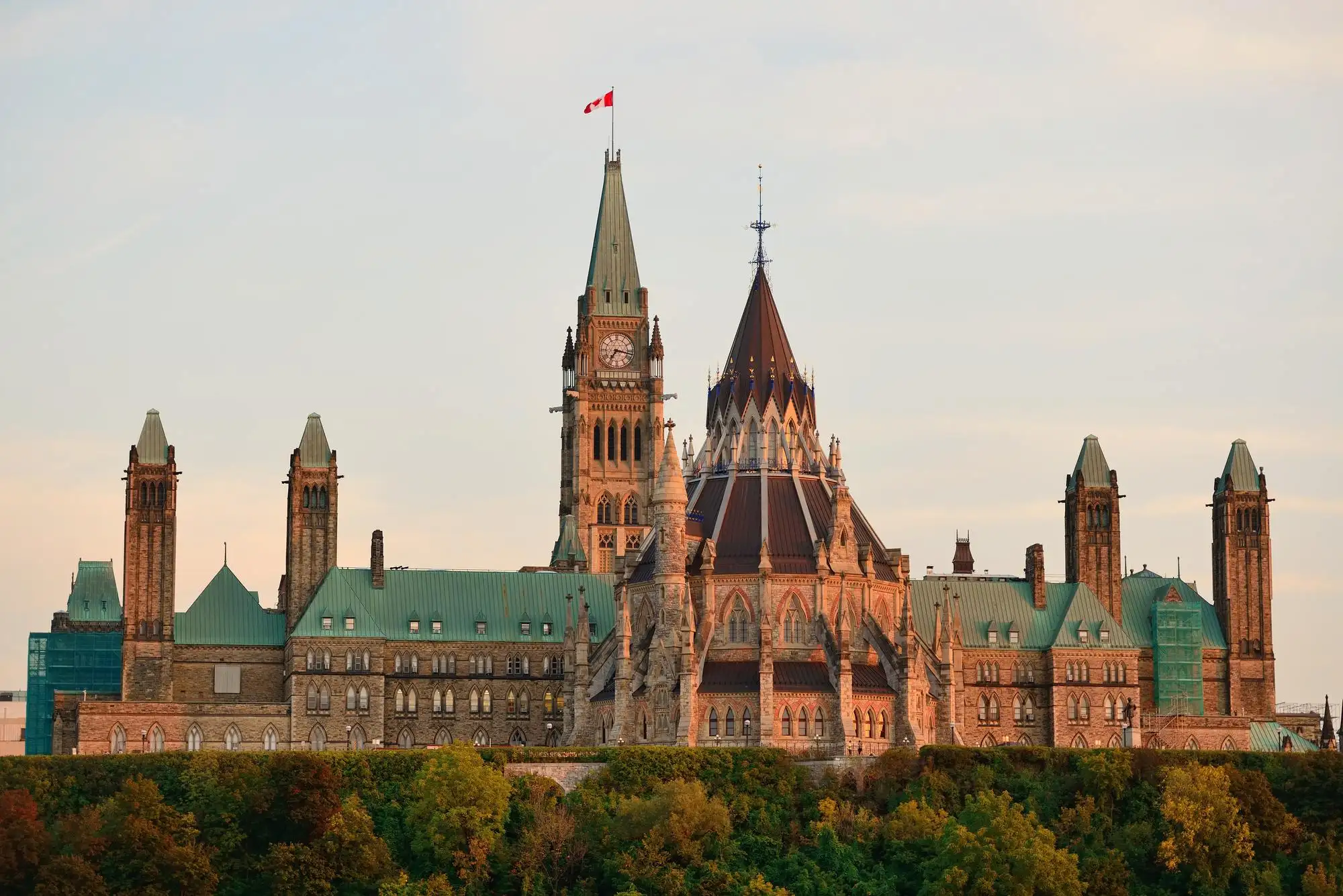Budget 2021 proposes to extend the Canada Emergency Wage Subsidy (CEWS), the Canada Emergency Rent Subsidy (CERS) and the Lockdown Support until September 2021. The subsidy rates would gradually decline over the July-to-September period. Budget 2021 also proposes to provide the government with authority to extend these programs until November 20, 2021, should the economic and public health situation warrant it.
The policy sentiment behind these proposals seems to frown upon so-called “big corporations” where c-suite executives take home big paycheques. This could be indicative of who the tax authorities will pursue in future CEWS/CERS audits.
- 1. Canada Emergency Wage Subsidy
- Rates and Reference Periods for Periods 17 to 20
- Additional Baseline Remuneration Options
- Bad News for Public Companies
- 2. Canada Emergency Rent Subsidy
- 3. Canada Recovery Hiring Program
- Can you Claim Both the CEWS and CRHP?
- Who is Eligible?
- Do I use the same revenue decline method as CEWS?
- What is the Subsidy Amount?
- Is there a maximum subsidy amount?
- Do Salaries to Owners and Family Count?
- 4. Case Study
1. Canada Emergency Wage Subsidy
There is nothing fundamentally new about the CEWS subsidy, other than that the subsidy is being extended until September 25, 2021 (perhaps longer).
Rates and Reference Periods for Periods 17 to 20
The wage subsidy rates for June 6, 2021 to September 25, 2021, are as follows (note that they start to go down after Period 18):
Period 17 June 6 – July 3 |
Period 18 July 4 – July 31 |
Period 19 August 1 – August 28 |
Period 20 August 29 – September 25 |
|
| Maximum weekly benefit per employee* | $847 | $677 | $452 | $226 |
| Revenue decline: | ||||
| 70% and over | 75% (i.e., Base: 40% + Top-up: 35%) |
60% (i.e., Base: 35% + Top-up: 25%) |
40% (i.e., Base: 25% + Top-up: 15%) |
20% (i.e., Base: 10% + Top-up: 10%) |
| 50-69% | Base: 40% + Top-up: (revenue decline – 50%) x 1.75 (e.g., 40% + (60% revenue decline – 50%) x 1.75 = 57.5% subsidy rate) |
Base: 35% + Top-up: (revenue decline – 50%) x 1.25 (e.g., 35% + (60% revenue decline – 50%) x 1.25 = 47.5% subsidy rate) |
Base: 25% + Top-up: (revenue decline – 50%) x 0.75 (e.g., 25% + (60% revenue decline – 50%) x 0.75 = 32.5% subsidy rate) |
Base: 10% + Top-up: (revenue decline – 50%) x 0.5 (e.g., 10% + (60% revenue decline – 50%) x 0.5 = 15% subsidy rate) |
| >10-50% | Base: revenue decline x 0.8 (e.g., 30% revenue decline x 0.8 = 24% subsidy rate) |
Base: (revenue decline – 10%) x 0.875 (e.g., (30% revenue decline – 10%) x 0.875 = 17.5% subsidy rate) |
Base: (revenue decline – 10%) x 0.625 (e.g., (30% revenue decline – 10%) x 0.625 = 12.5% subsidy rate) |
Base: (revenue decline – 10%) x 0.25 (e.g., (30% revenue decline – 10%) x 0.25 = 5% subsidy rate) |
| 0-10% | Base: revenue decline x 0.8 (e.g., 5% revenue decline x 0.8 = 4% subsidy rate) |
0% | 0% | 0% |
| * The maximum weekly benefit per employee is equal to the maximum combined base subsidy and top-up wage subsidy for the qualifying period applied to the amount of eligible remuneration paid to the employee for the qualifying period, on remuneration of up to $1,129 per week. | ||||
The Reference Periods will be as follows for Periods 17 to Period 20:
| Timing | Period 17 June 6 – July 3 |
Period 18 July 4 – July 31 |
Period 19 August 1 – August 28 |
Period 20 August 29 – September 25 |
| General approach | June 2021 over June 2019 or May 2021 over May 2019 | July 2021 over July 2019 or June 2021 over June 2019 | August 2021 over August 2019 or July 2021 over July 2019 | September 2021 over September 2019 or August 2021 over August 2019 |
| Alternative approach | June 2021 or May 2021 over average of January and February 2020 | July 2021 or June 2021 over average of January and February 2020 | August 2021 or July 2021 over average of January and February 2020 | September 2021 or August 2021 over average of January and February 2020 |
You need to continue to use the same approach (General vs. Alternative) as you have done for the past applications.
Additional Baseline Remuneration Options
The rules provide more flexibility in selecting baseline remuneration for Periods 17 to 20. Consider whether your CEWS subsidy will be higher by electing to use a different baseline remuneration calculation. This is useful for small business owners who had higher average salaries in 2019 than during January 1, 2020 to March 15, 2020 (right before COVID hit).
| Qualifying Period | Baseline Remuneration |
| June 6, 2021 and July 3, 2021 (Period 17) | March 1 to June 30, 2019 or July 1 to December 31, 2019 |
| After July 3, 2021 (Periods 17 to 20) | July 1 to December 31, 2019 |
Bad News for Public Companies
As a way to discourage large corporations from receiving the wage subsidy while increasing salaries to key executives, Budget 2021 proposes to require public corporations to repay wage subsidy amounts received for a qualifying period that begins after June 5, 2021, if its total compensation for specified executives during the 2021 calendar year exceeds total compensation during the 2019 calendar year.
Specified executives will be its Named Executive Officers whose compensation is required to be disclosed under Canadian securities laws in its annual information circular provided to shareholders, or similar executives in the case of a corporation listed in another jurisdiction. For example:
- chief executive officer
- chief financial officer
- and three other most highly compensated executives.
The amount of the wage subsidy required to be repaid would be equal to the lesser of:
- the total of all wage subsidy amounts received in respect of active employees for qualifying periods that begin after June 5, 2021; and
- the amount by which the corporation’s aggregate specified executives’ compensation for 2021 exceeds its aggregate specified executives’ compensation for 2019.
This requirement to repay would be applied at the group level. It would apply to wage subsidy amounts paid to any entity in the group.
2. Canada Emergency Rent Subsidy
The rent subsidy rates for June 6, 2021 to September 25, 2021 are as follows:
Period 17 June 6 – July 3 |
Period 18 July 4 – July 31 |
Period 19 August 1 – August 28 |
Period 20 August 29 – September 25 |
|
| Revenue decline: | ||||
| 70% and over | 65% | 60% | 40% | 20% |
| 50-69% | 40% + (revenue decline – 50%) x 1.25 (e.g., 40% + (60% revenue decline – 50%) x 1.25 = 52.5% subsidy rate) |
35% + (revenue decline – 50%) x 1.25 (e.g., 35% + (60% revenue decline – 50%) x 1.25 = 47.5% subsidy rate) |
25% + (revenue decline – 50%) x 0.75 (e.g., 25% + (60% revenue decline – 50%) x 0.75 = 32.5% subsidy rate) |
10% + (revenue decline – 50%) x 0.5 (e.g., 10% + (60% revenue decline – 50%) x 0.5 = 15% subsidy rate) |
| >10-50% | Revenue decline x 0.8 (e.g., 30% revenue decline x 0.8 = 24% subsidy rate) |
(Revenue decline – 10%) x 0.875 (e.g., (30% revenue decline – 10%) x 0.875 = 17.5% subsidy rate) |
(Revenue decline – 10%) x 0.625 (e.g., (30% revenue decline – 10%) x 0.625 = 12.5% subsidy rate) |
(Revenue decline – 10%) x 0.25 (e.g., (30% revenue decline – 10%) x 0.25 = 5% subsidy rate) |
| 0-10% | Revenue decline x 0.8 (e.g., 5% revenue decline x 0.8 = 4% subsidy rate) |
0% | 0% | 0% |
| * Expenses for each qualifying period are capped at $75,000 per location. They are subject to an overall cap of $300,000 that is shared among affiliated entities. ** Period 17 of the Canada Emergency Wage Subsidy would be the tenth period of the Canada Emergency Rent Subsidy. Period identifiers have been aligned for ease of reference. |
||||
The Reference Periods will be the same as the CEWS for Periods 17 to Period 20.
More Flexibility to Access CERS for New Businesses
Businesses needed to have a business number with the CRA on September 27, 2020. New businesses that purchased business assets from a seller after this date may not qualify. Budget 2021 proposes to introduce a deeming rule where if the seller met the business number requirement, then the buyer would as well. This measure would apply as of the start of the rent subsidy. So, new business owners are in luck!
Lockdown Support Extended
Budget 2021 proposes to extend, for the qualifying periods from June 6, 2021 to September 25, 2021, the current 25-per-cent rate for the Lockdown Support.
3. Canada Recovery Hiring Program
To help businesses emerge out of the pandemic, Budget 2021 proposes to introduce the new Canada Recovery Hiring Program (CRHP) to provide eligible employers with a subsidy of up to 50% on the incremental remuneration paid to eligible employees between June 6, 2021 and November 20, 2021.
Can you Claim Both the CEWS and CRHP?
No. An eligible employer would be permitted to claim either the hiring subsidy or the Canada Emergency Wage Subsidy for a particular qualifying period, but not both. So you will need to decide which program is better and apply accordingly.
Who is Eligible?
The following entities:
- Canadian-controlled private corporation
- individuals
- non‑profit organizations
- registered charities
- certain partnerships (generally, where partners are the entities mentioned above)
These entities must have a revenue decline of more than:
- 0%, for the qualifying period between June 6, 2021 and July 3, 2021; and
- 10%, for qualifying periods between July 4, 2021 and November 20, 2021.
The decline in revenues would be determined in the same manner as under the CEWS.
Do I use the same revenue decline method as CEWS?
Yes. Employers that had chosen to use the general approach for prior periods of the Canada Emergency Wage Subsidy would be required to continue to use that approach for the hiring subsidy. Similarly, employers that had chosen to use the alternative approach would be required to continue to use the alternative approach.
What is the Subsidy Amount?
The subsidy is determined by the following formula:
A x (B-C)
A = recovery wage subsidy rate;
B = total current period remuneration;
C = total base period remuneration
Recovery Wage Subsidy Rate
Period 17 June 6 – July 3 |
Period 18 July 4 – July 31 |
Period 19 August 1 – August 28 |
Period 20 August 29 – September 25 |
Period 21 September 26 – October 23 |
Period 22 October 24 – November 20 |
|
| Recovery Wage Subsidy Rate | 50% | 50% | 50% | 40% | 30% | 20% |
| *Period 17 of the Canada Emergency Wage Subsidy would be the first period of the Canada Recovery Hiring Program. Period identifiers have been aligned for ease of reference. | ||||||
Incremental Remuneration
Incremental remuneration for a qualifying period means the difference between:
- total current period remuneration: an employer’s total eligible remuneration paid for the qualifying period, and
- total base period remuneration: its total eligible remuneration paid to eligible employees for the baseline period.
Qualifying Period
| Qualifying period | Period 17 | Period 18 | Period 19 | Period 20 | Period 21 | Period 22 |
| Qualifying period dates | June 6 to July 3, 2021 | July 4 to July 31, 2021 | August 1 to August 28, 2021 | August 29 to September 25, 2021 | September 26 to October 23, 2021 | October 24 to November 20, 2021 |
| Baseline period | March 14 to April 10, 2021 | |||||
| *Period 17 of the Canada Emergency Wage Subsidy would be the first period of the Canada Recovery Hiring Program. Period identifiers have been aligned for ease of reference. | ||||||
Is there a maximum subsidy amount?
Yes. In both the current period and the base period, eligible remuneration for each eligible employee would be subject to a maximum of $1,129 per week (the same amount used for CEWS).
Period 17 June 6 – July 3 |
Period 18 July 4 – July 31 |
Period 19 August 1 – August 28 |
Period 20 August 29 – September 25 |
Period 21 September 26 – October 23 |
Period 22 October 24 – November 20 |
|
| General approach | June 2021 over June 2019 or May 2021 over May 2019 | July 2021 over July 2019 or June 2021 over June 2019 | August 2021 over August 2019 or July 2021 over July 2019 | September 2021 over September 2019 or August 2021 over August 2019 | October 2021 over October 2019 or September 2021 over September 2019 | November 2021 over November 2019 or October 2021 over October 2019 |
| Alternative approach | June 2021 or May 2021 over average of January and February 2020 | July 2021 or June 2021 over average of January and February 2020 | August 2021 or July 2021 over average of January and February 2020 | September 2021 or August 2021 over average of January and February 2020 | October 2021 or September 2021 over average of January and February 2020 | November 2021 or October 2021 over average of January and February 2020 |
| *Period 17 of the Canada Emergency Wage Subsidy would be the first period of the Canada Recovery Hiring Program. Period identifiers have been aligned for ease of reference. | ||||||
Do Salaries to Owners and Family Count?
Yes, they do.
However, the eligible remuneration for a non-arm’s length employee for a week could not exceed their baseline remuneration determined for that week. This is similar to the CEWS subsidy.
Suppose you are an owner who had salary pre-COVID but reduced your salary from March 14, 2020 to April 10, 2020. In that case, you may increase your salary starting on June 6th to get up to 50% of your salary subsidized. There are many businesses where owners took a pay cut during COVID. They may now start paying themselves and have some of it subsidized by the government.
4. Case Study
JM Café is a Café operating out of Ontario. Due to COVID restrictions, iIt laid off most of its employees from March 14, 2021 to April 10, 2021. Its only employee during this time was John, who earned $500 per week.

From June 6 to July 3, 2021, the Café hired back Mark, who earned $1,200 a week (max subsidy is based on wages of $1,129 per week), and Jay, who earned $1,000 a week.
JM Café determined that its subsidy under CRHP is higher than the CEWS. It calculates its subsidy as follows:
| John | Mark | Jay | Total | |
| Total base period remuneration | $2,000 | $- | $- | $2,000 |
| Total current period remuneration | 2,000 | 4,516 ($1,129 x 4) |
4,000 | 10,516 |
| Difference | $0 | $4,516 | $4,000 | 8,516 |
| Recovery Wage Subsidy Rate | 50% | |||
| Canada Recovery Hiring Program Subsidy | $4,258 |
Contact us
Contact one of our tax specialists who can help your business emerge from the pandemic by looking at ways your business may qualify for one of the above subsidies.


